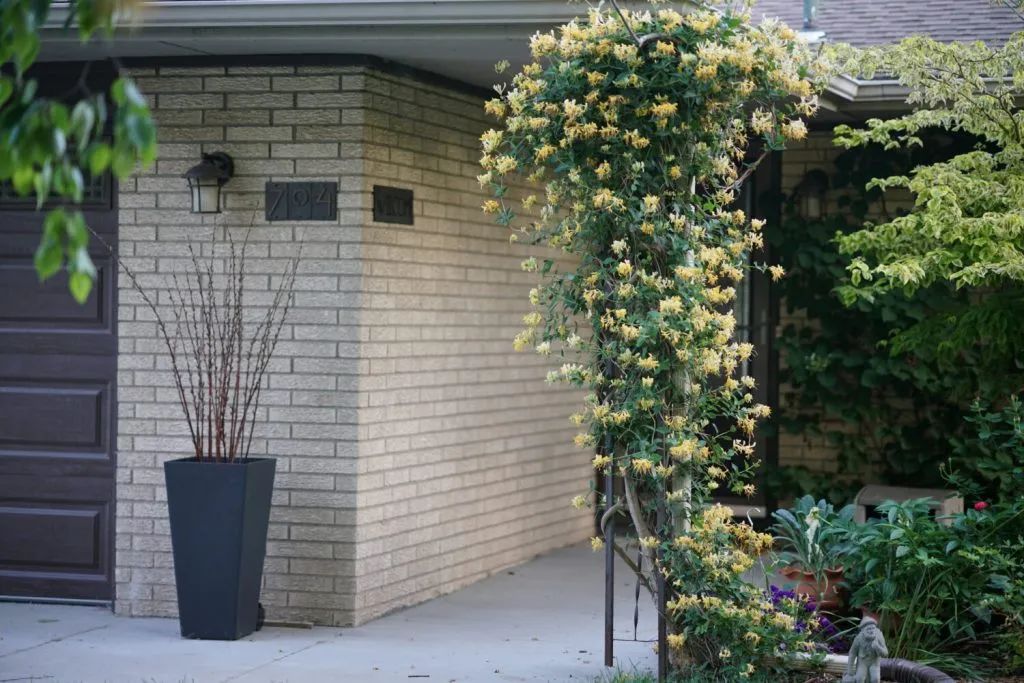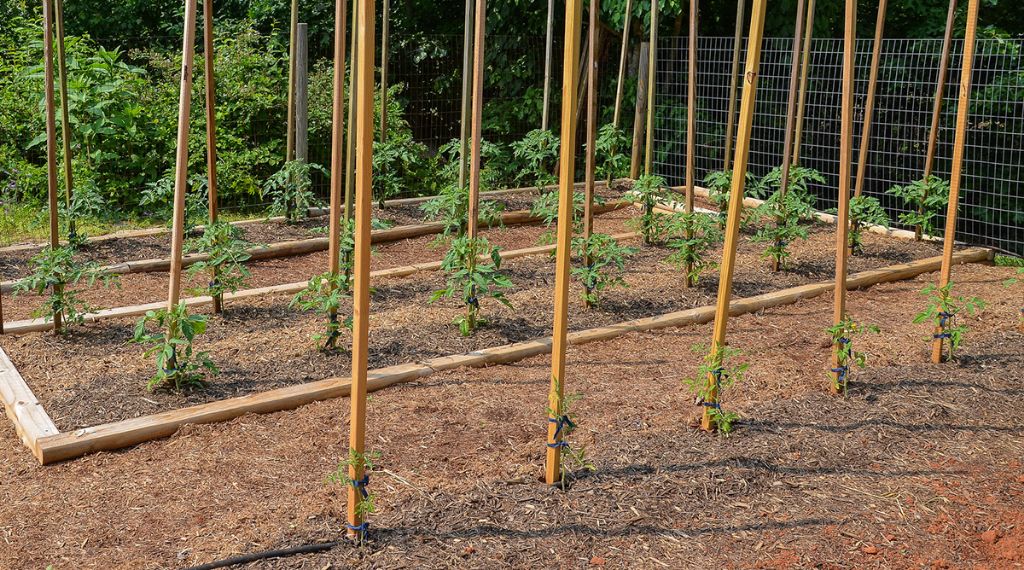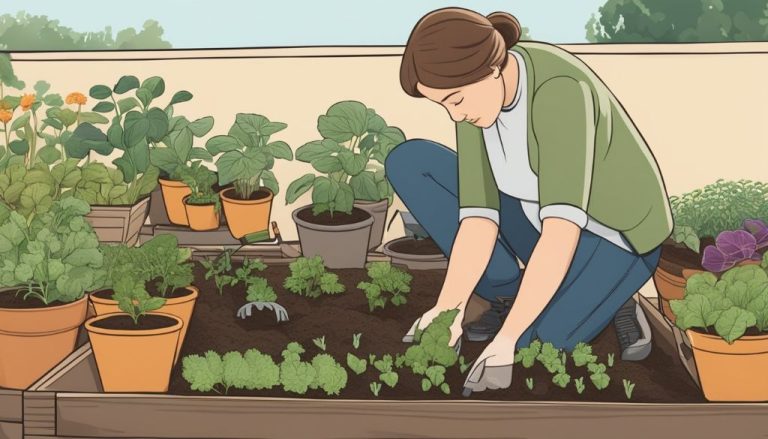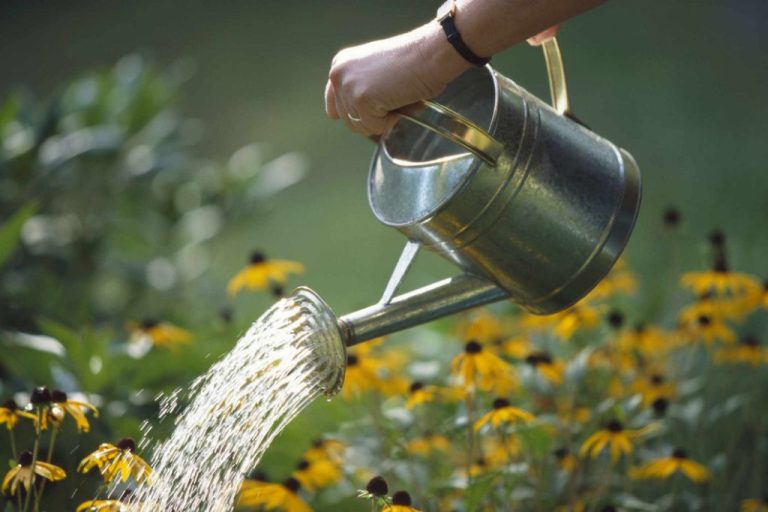Edible Garden Trellising: Supporting Vining Plants For Maximum Yield
Trellising is a gardening technique that involves providing physical support for vining or climbing plants. When it comes to edible gardening, trellising offers numerous benefits for maximizing yields and managing vine crops like beans, tomatoes, cucumbers, melons, and squash. Proper trellising provides support so plants can grow vertically rather than sprawling on the ground. This improves air circulation and light exposure, while also keeping fruit and vegetables off the soil to reduce rot and pest damage. Trellising makes harvesting easier, improves disease prevention, and allows for more intensive planting in smaller spaces. Overall, trellising techniques are an essential component for any edible gardener looking to increase their productivity and manage vining crops effectively.
Common Vining Edible Plants
Some of the most popular vining edible plants that can be grown on trellises include:
- Pole beans – These climbing beans produce heavily when trellised, such as runner beans and pole snap beans (Source).
- Cucumbers – Allowing cucumbers to grow vertically prevents the fruit from sitting on wet soil and helps improve yields and quality (Source).
- Tomatoes – Indeterminate tomato varieties continue to grow and produce fruit until killed by frost. Trellising keeps them off the ground for improved health and yields (Source).
- Grapes – Both wine and table grapes grow well on trellises, which support their vigorous growth habit and heavy fruit loads (Source).
- Kiwi – Kiwi vines need strong trellising support and produce sweeter fruit when grown vertically rather than allowed to sprawl (Source).

Other vining edible plants like melons, squash, climbing peas, passionfruit, chayote, and malabar spinach also produce well when trellised.
Trellis Materials
When selecting materials for building a trellis, it’s important to choose options that are sturdy, durable, and weather resistant. Some of the most common and effective trellis building materials include:
Wood – Cedar, redwood, and pressure-treated pine are popular wood choices for trellises. Wood provides strength and allows you to construct customized shapes and sizes. Look for rot-resistant wood or use preservative treatments. For example, the article from TinkTube recommends using 4×4 posts and 2×4 cross beams when building a sturdy wooden trellis.
Metal – Wrought iron, aluminum, galvanized steel are common metal trellis options. Metal is very strong, durable, and weather-resistant. It can be expensive, but provides long-lasting support. The article from Gardeners.com suggests using galvanized steel cables and poles for a sturdy metal vine support structure.
Bamboo – Bamboo makes an attractive natural-looking trellis. It’s lightweight yet strong. Look for larger, durable bamboo stalks or poles. Use bamboo that has been dried and cured for outdoor use. Bamboo will need replacing every few years as it deteriorates.
Other materials like PVC, vines, rope or twine can also be used for more temporary trellis structures. Consider strength, weather resistance, and durability when selecting trellis building materials.
Trellis Designs
There are many different trellis designs that can support vining edible plants and maximize yields. Some popular options include:
A-Frame Trellises
A-frame trellises consist of two tall stakes connected at the top by a crossbar, creating an A-shape. These are simple to construct and allow you to grow vining plants upwards on both sides. A-frames work well for plants like pole beans, cucumbers, and peas. Make sure to position A-frame trellises so that they don’t shade other plants as vines grow (Source).
Tepees
Tepees are created by placing tall stakes in a circular shape and tying them together at the top. Vining plants are then grown up and over the tepee. This allows you to maximize vertical growing space. Tepees work great for plants like pole beans, tomatoes, and squash. For stability, interplant heavy vining plants like winter squash with lighter plants like cucumbers (Source).
Obelisks
Obelisk trellises consist of a tall central stake with crossed braces at intervals along its height. Plants are grown up and allowed to fill in the spaces between the braces. Obelisks are attractive trellis choices that take up minimal garden space. They work well for compact vining plants like bush beans, peas, and cucumbers.
Espaliers
Espaliers are created by training vining plants to grow flat against a trellis or wire frame. This involves carefully tying vines to create a flat plane. Espaliers allow you to maximize space against walls, fences, or posts. They work best for small-fruited crops like grapes, currants, and dwarf fruit trees.
Setting Up Trellises

Properly installing and securing trellises is crucial for supporting vining plants and maximizing yields. Here are some tips when setting up trellises in your garden:
Choose a sturdy mounting method like planting posts or using rebar to anchor freestanding trellises into the ground. According to this source, using 6-foot rebar pieces hammered 2 feet into the ground provides excellent stability.
Position trellises to maximize sunlight exposure. Most vining plants require at least 6 hours of direct sun per day. Orient trellises on a north-south axis to avoid shading.
Allow ample vertical clearance, spacing trellises far enough from fences or structures. This prevents crowding and allows access for pruning and harvesting.
Place trellises before planting vines. It’s much easier to train young vines to climb rather than trying to attach established plants.
Consider weight-bearing capacity if building homemade trellises. Use sturdy materials like 2×2 posts and avoid skinny bamboo poles which can break under the weight of mature vines.
Securely fasten all joints with wood screws or metal brackets. This adds stability in windy conditions.
Training Vines
Properly training vines to grow on a trellis takes some patience and know-how. Here are some key techniques for guiding your vining plants up trellises:
Begin training vines when they are still young, flexible stems. Use soft plant ties or twine to gently tie stems to the trellis as they grow. Tie main stems first, then smaller side shoots [1]. Keep an eye out for new shoot growth and continue securing it to the trellis often.
For vines with tendrils like peas or pole beans, position shoots near trellis supports and allow tendrils to attach themselves [2]. Lightly secure wandering stems to keep them heading in the right direction.

Pinch off vine tips once they reach the top of the trellis to encourage bushier growth. For flowering vines, pinch just above a leaf node to promote branching and more blooms.
Gently wind longer vines back down the trellis or along support wires to direct growth. Avoid tightly winding which can constrict stems.
Remove any unwanted side shoots growing away from the trellis so all growth is concentrated in the right direction.
Let me know if you would like me to modify or expand this section further.
Ongoing Care
Proper ongoing care is crucial for vining plants grown on trellises to maximize yields. Key aspects of care include pruning, checking ties, and general maintenance.
Pruning is important to promote outward growth that takes advantage of the trellis support. Prune off inward-facing shoots and excessive lateral growth. Also prune off vines that have grown too long and droop. The ideal is to maintain outward-facing shoots spaced 6-12 inches apart. Prune just above nodes or buds.
It’s important to regularly check ties and retie vines as needed. Vines can grow quickly and will loosen from their ties. Retie drooping vines to maintain upward growth on the trellis. Also check for and remove vines that have wrapped around the ties, which can girdle and damage the vine.
For general trellis maintenance, watch for issues like rusting of metal trellises and degradation of wood trellises. Make any needed repairs. Also periodically clear away excess foliage around the base of the trellis to allow access and airflow.
With proper ongoing pruning, tying and general care, vining plants can be supported for optimal growth and maximum yields.
Maximizing Yields

Trellising vegetable plants such as tomatoes, cucumbers, beans, and peas can significantly increase yields compared to letting them sprawl on the ground. Trellising improves air circulation and light exposure, allowing more of the plant to photosynthesize. This results in larger, healthier plants that produce more fruit. Attaching vines to a trellis also keeps the fruit off the ground, reducing the risk of rot and disease. According to the University of Minnesota Extension [1], tomato yields can be increased by up to 80% by using trellises instead of cages. Cucumbers grown vertically on a trellis produce straighter, more uniform fruit. Trellising peas and beans makes it easier to find and harvest the pods without searching through foliage. Overall, providing physical support for vining edible plants leads to better plant health, improved access to sunlight and air circulation, and higher yields.
Troubleshooting Issues
All gardening methods come with potential problems, and trellising is no exception. However, most common trellising issues can be easily addressed with some simple solutions.
One common problem is vines slipping through or breaking trellises. To prevent this, ensure trellises have openings no larger than 2 inches for most vining plants. Also, inspect trellises before each growing season and repair or replace any damaged or weak sections.
Another frequent problem is vines becoming overgrown and unruly. To maintain control, regularly prune and train vines along trellises. Remove any excess lateral shoots to encourage upward, rather than outward, growth. Thin overly dense foliage to allow sunlight and air circulation.
Wind damage is also a concern with trellises. Stake trellis posts securely into the ground, at least 1-2 feet deep. For extra stability, anchor end posts with braces attached to the fence or an adjacent surface. Avoid extremely top-heavy trellises that act as a sail in windy conditions.
Insufficient support leading to collapsed or sagging vines is common as well. Use sturdy trellis materials that will not bend or lean under the weight of mature vines and fruits. For heavy yields, incorporate robust vertical, horizontal, and diagonal reinforcements. Monitor support levels and add additional stakes or ties as needed.
By taking some simple preventative measures and addressing issues promptly, most common trellising problems can be effectively managed for a successful harvest.
Conclusion
Trellising vining plants in your edible garden can provide many benefits and maximize yields. As we’ve discussed, properly designed and installed trellises give climbing plants the vertical support they need to grow upwards rather than sprawling on the ground. This vertical growth allows more sunlight exposure for ripening fruits, prevents disease and rot from ground moisture, and makes harvesting easier.
Some key points to remember are choosing trellising materials like wood, metal, or bamboo that are sturdy enough to support mature vines. The trellis shape and height should match the type of vine, training the vines carefully onto the trellis as they grow. Ongoing maintenance like pruning and tying up vines is needed for best results. With a well-designed, installed and maintained trellis, you can maximize your yield from vining crops like tomatoes, cucumbers, beans, and more in your edible garden. The effort spent on properly trellising is well worth the benefits for plant health and increased production.






